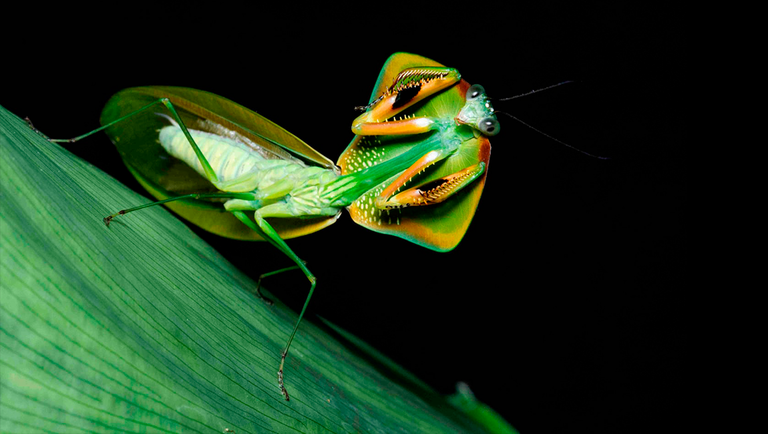Advanced cookie settings
To improve your experience on the platform and provide personalized services, we use cookies.
Notícias

The collection is the result of a partnership with the Mantis Project - Photo Leo Lanna
The Rio de Janeiro Botanical Garden has gained a new biological collection, this time of insects. The Mantis Neotropical collection has around 800 praying mantis specimens, and is already emerging as a national reference in the study of this insect, which camouflages itself in branches and flowers, dry or green leaves, mosses, and has great diversity. The collection is the result of a partnership with the Mantis Project, an organization that has been working for a decade on the research, conservation and dissemination of praying mantises in tropical forests.
Most of the more than 800 specimens come from Mantis Project expeditions to various regions of the country, especially the Amazon and Atlantic Forest biomes. The team, currently made up of biologist Leo Lanna and designer Lvcas Fiat, travels the country in search of new and rare species, on immersive expeditions that can last up to two months. The essence of the work is the nocturnal search, documenting the rich biodiversity. The expeditions are supported by other important institutions such as the National Geographic Society.
Among the specimens in the collection are more than 15 new species at different stages of description. Most of them were found on these expeditions, as well as collaborations with other partners such as researcher João Herculano, who is also assistant curator of the collection and focuses his work on the praying mantises of the Atlantic Forest.
The specimens are stored dry in entomological drawers in their own cabinets in an air-conditioned container, guaranteeing their preservation. This year, the collection will begin the process of cataloguing and digitizing representative specimens of the country's species.
The collection can be visited by researchers and students from the second half of this year and, in the future, will be open to the public on special occasions.
According to the collection's curator, Rio Botanical Garden technologist Maria Lucia França Teixeira Moscatelli, praying mantises are regulators of other species. Being a predator, they exert a natural control on the environment. “They play an important role in controlling other insects, helping to maintain the balance in the ecosystems where they live,” says Maria Lucia.
The praying mantis is harmless to humans and is used for pest control. They have exuberant colors and shapes, and are camouflaged in their environments. There are species that mimic branches, green or dry leaves, mosses and even animals such as ants. They use camouflage to catch their prey, usually insects smaller than themselves, and also to hide from predators such as birds and amphibians.
The name of the collection comes partly from Greek. Mantis means praying mantis in the Greek language. For the Greeks, an animal full of power, capable of showing the way to something or someone that has been lost. Neotropical is the region from central Mexico to Central and South America. Thus, it is the species of praying mantis belonging to this region.
In Brazil, there are still few studies and knowledge about mantises, even though the country has the greatest diversity of mantis species in the world.
According to Leonardo Lanna, founder of the Mantis Project and assistant curator, the study of mantises is a look at the fantastic diversity of our country. “With each expedition we not only discover species that are new to science, but we also document the rich and surprising nocturnal biodiversity. Each reserve and protected land is unique, it has details, animals and plants that you can't see anywhere else and the collection shows this richness through the praying mantis,” he points out.
Maria Lucia Moscatelli also points out that cooperation with the Mantis Project will enable partnerships with other national and international institutions to advance the study of praying mantises. The first is already underway. Together with Peruvian researcher Julio Rivera, with funding from the National Geographic Society, the Mantis Project team will be making two major expeditions to the Hileia Baiana in search of new and rare species.
The partnership between the Rio Botanical Garden and the Mantis Project began in 2016. Since then, the collaboration has grown stronger, with the Garden's Plant Health Laboratory as a base for praying mantis research, culminating in the collection becoming official this year. In addition to research, the Mantis Project has already taken part in various scientific outreach activities at the JBRJ, such as lectures and stands at the National Science and Technology Week.
With the continuation of the partnership and expeditions, the aim is that, in the future, the collection will have representatives of all the praying mantises in Brazil, becoming the first stop for students and researchers who want to understand more about these curious insects.
